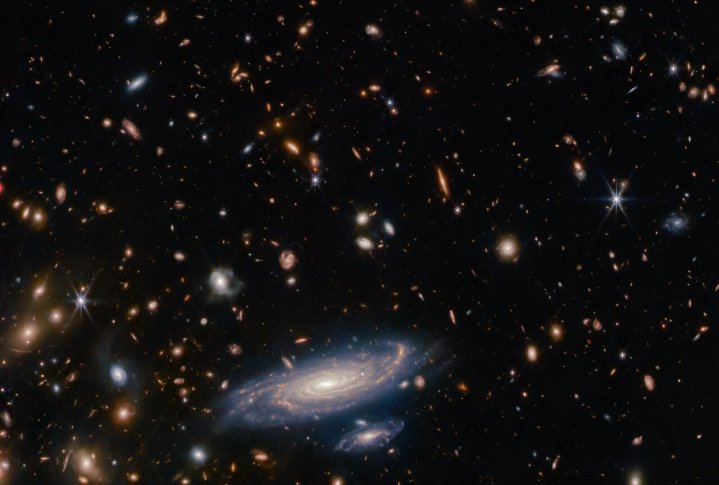Stunning images from the James Webb Space Telescope continue to entrance, and recently the researchers using the telescope have shared a gorgeous image of a field of galaxies as part of the Webb Picture of the Month collection.
The image shows a spattering of different background galaxies, while the foreground shows bright individual stars and a bright spiral galaxy at the bottom called LEDA 2046648. Located around a billion light-years from Earth, this galaxy is relatively much closer to us than the far-off background galaxies which is why it is so prominent in the image.

The data for this image were collected as part of the calibration process for some of Webb’s instruments. Although instruments used in space-based telescopes are calibrated as exactly as possible while they are still on the ground, it is still necessary to perform some more refinement once the telescope is launched and is in its final orbit. In the case of Webb, its instruments continued to be calibrated for several months after its launch.
To calibrate an instrument, one method that engineers use is to point the instrument at a known target to see what data they get back and whether this data conforms with the known features of that object. Another approach is to use several instruments simultaneously and to check whether the instruments’ data correspond correctly. Both approaches were done here, as this image was collected by the NIRCam instrument during the calibration of the NIRISS instrument.
“This particular observation was part of the commissioning campaign for Webb’s Near-InfraRed Imager and Slitless Spectrograph (NIRISS),” the European Space Agency writes. “As well as performing science in its own right, NIRISS supports parallel observations with Webb’s Near-InfraRed Camera (NIRCam). NIRCam captured this galaxy-studded image while NIRISS was observing the white dwarf WD1657+343, a well-studied star. This allows astronomers to interpret and compare data from the two different instruments, and to characterize the performance of NIRISS.”
The careful calibration of Webb’s instruments is allowing the telescope to view some of the most distant galaxies ever observed, meaning it can essentially look back in time to the formation of galaxies in the early universe.



